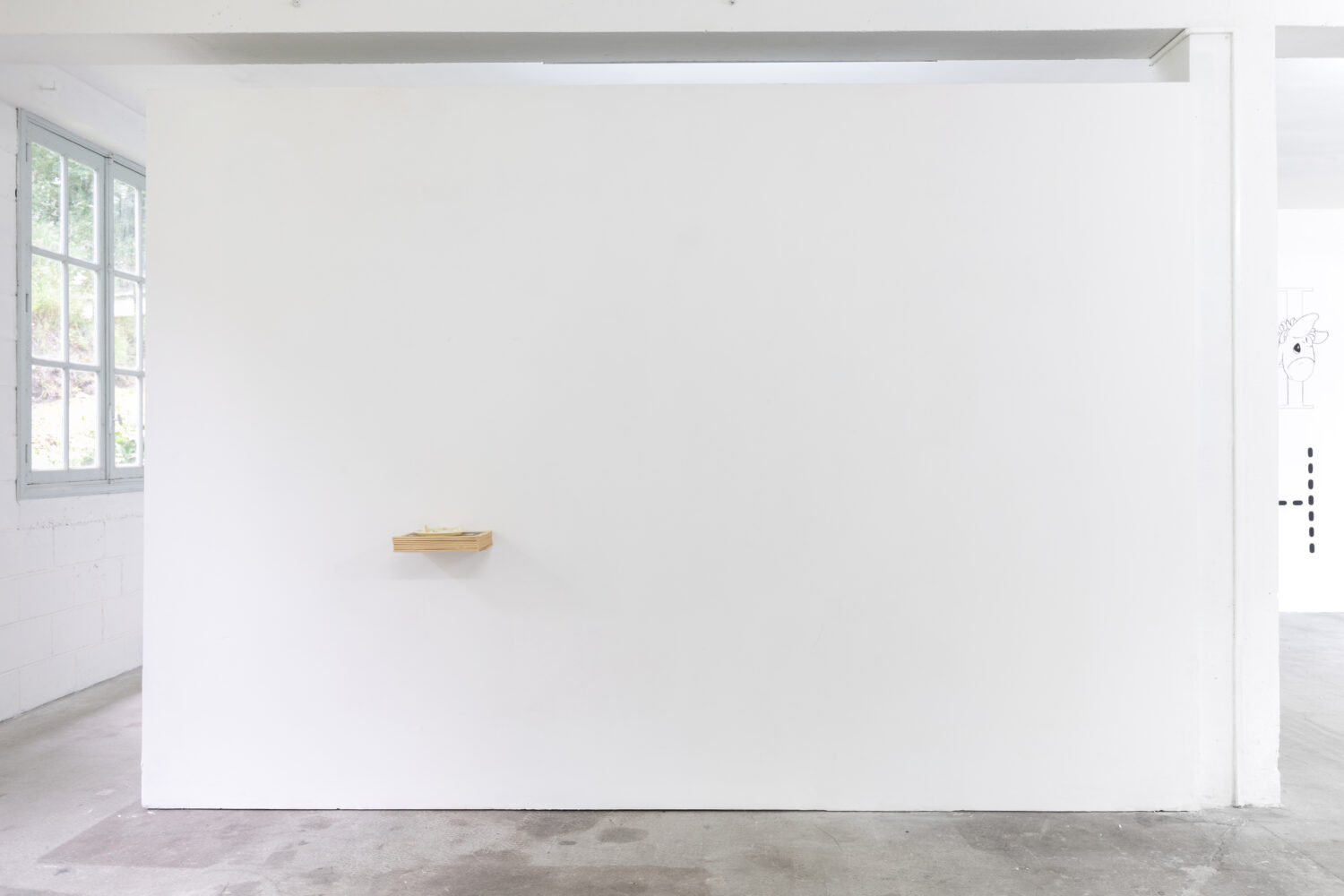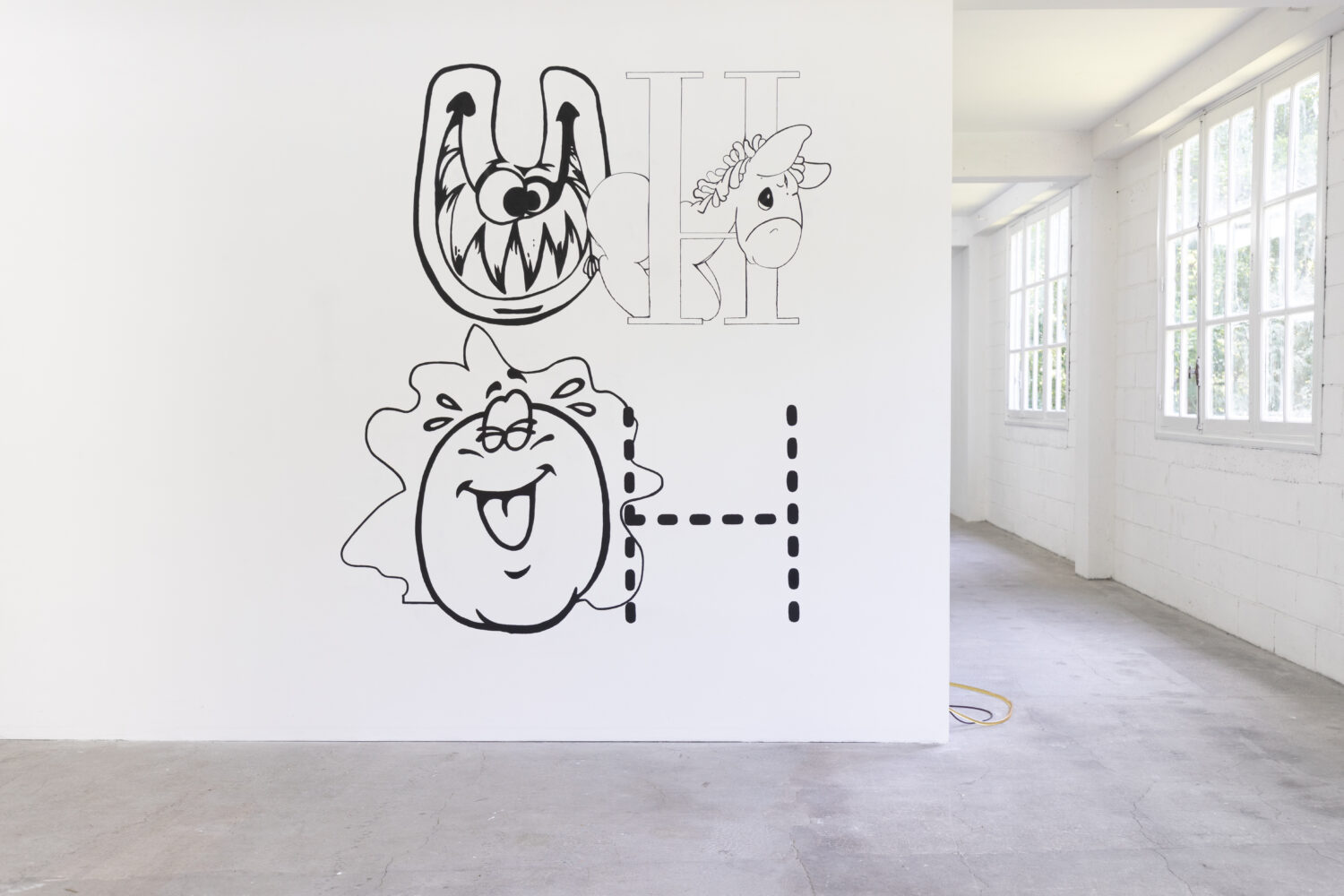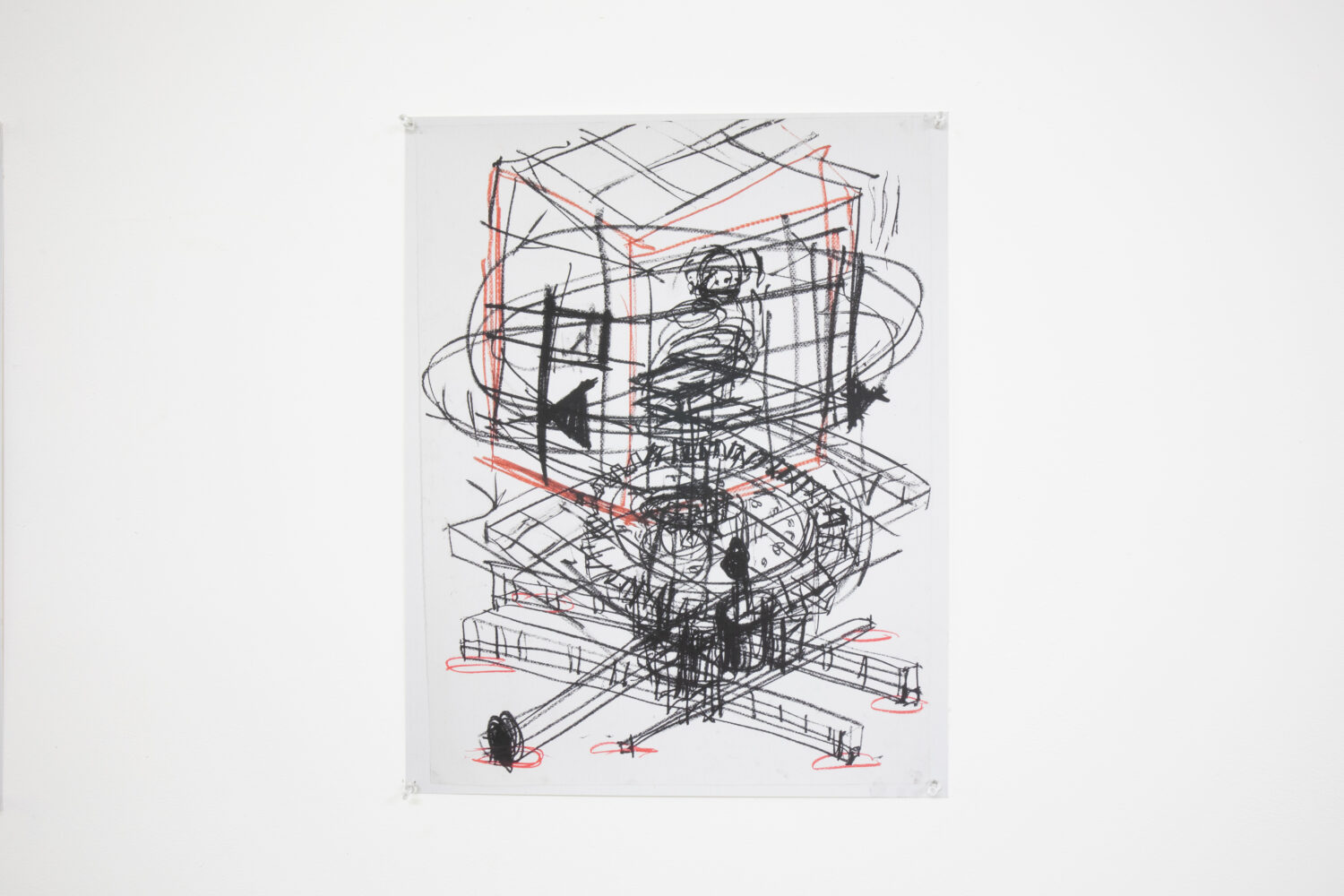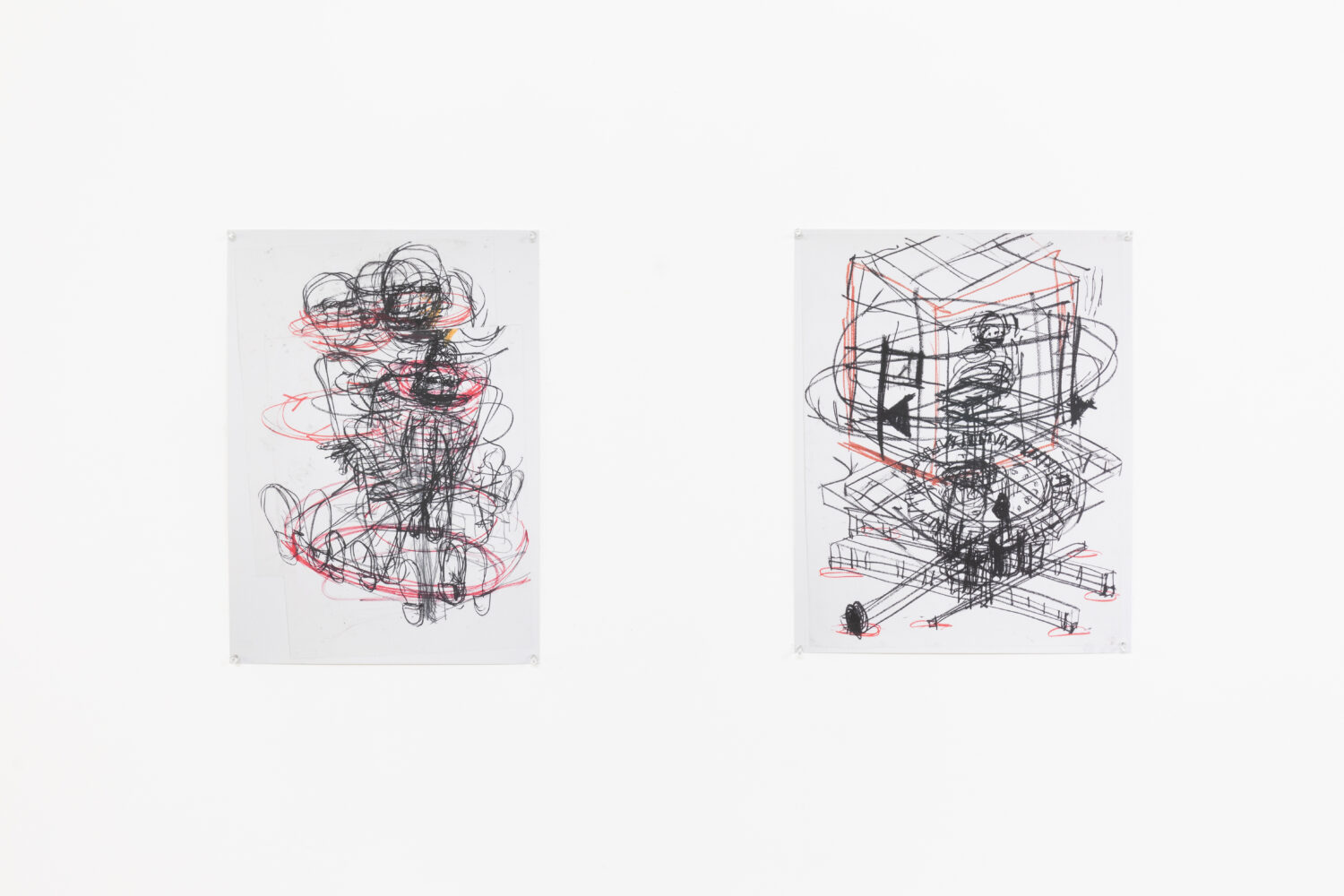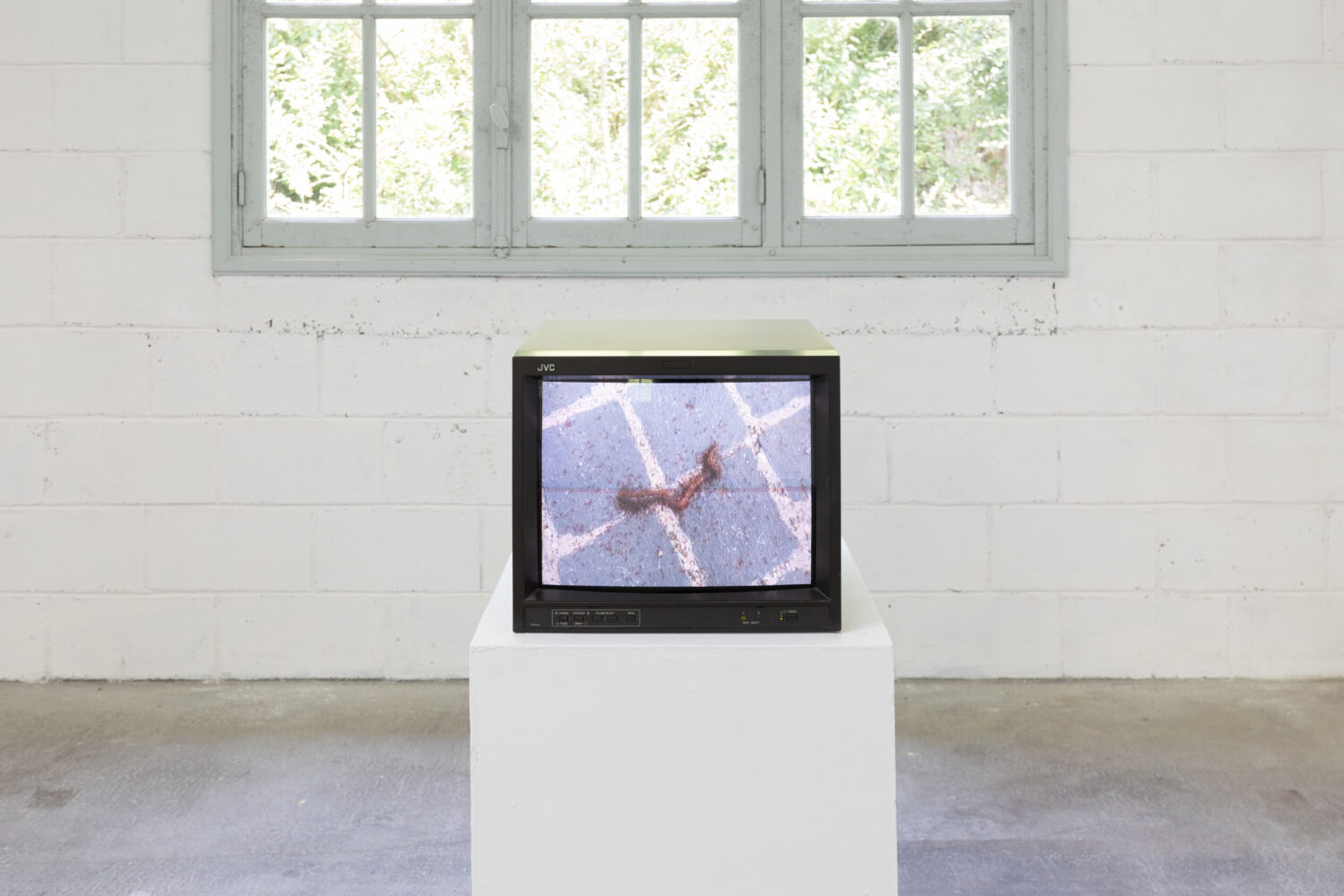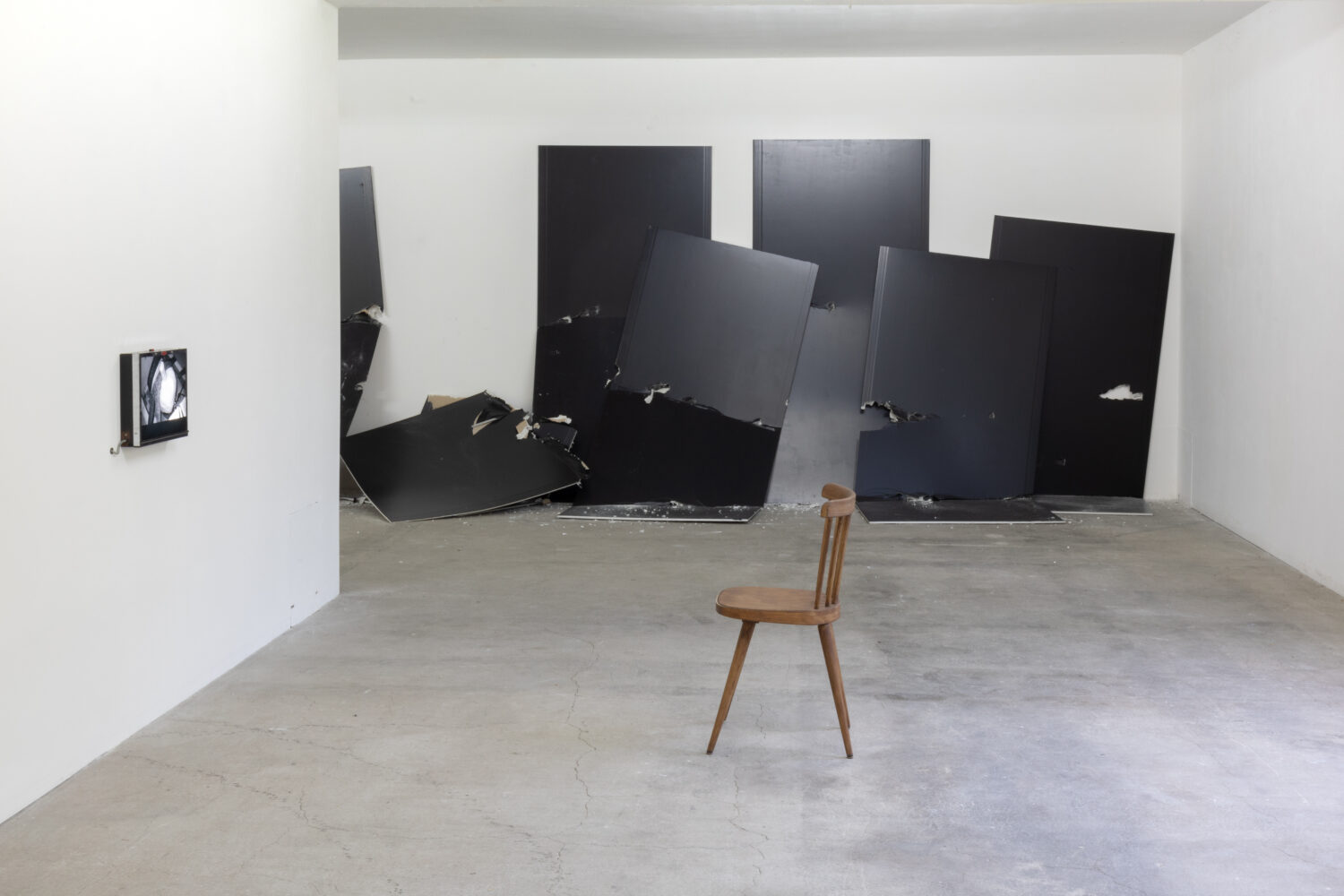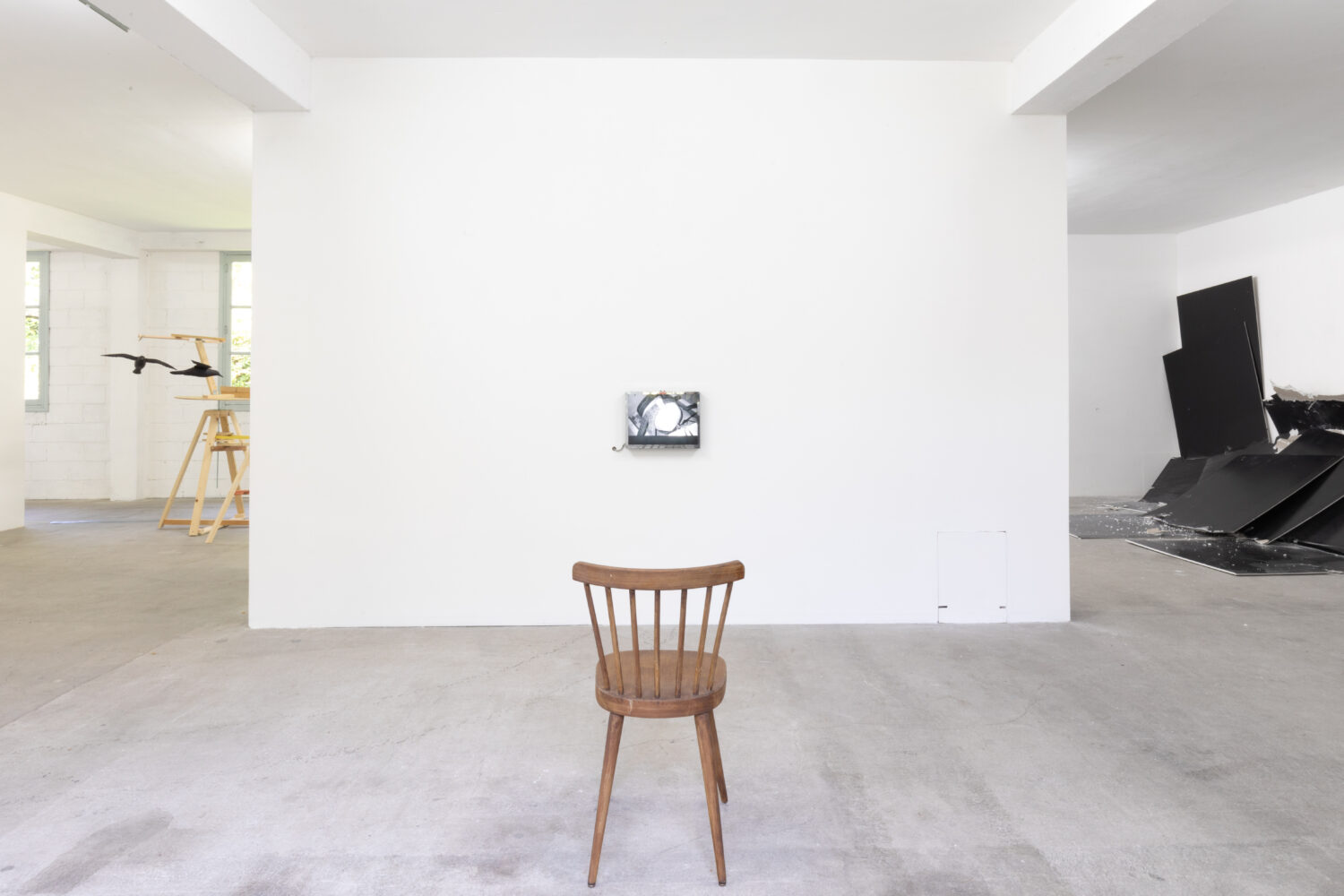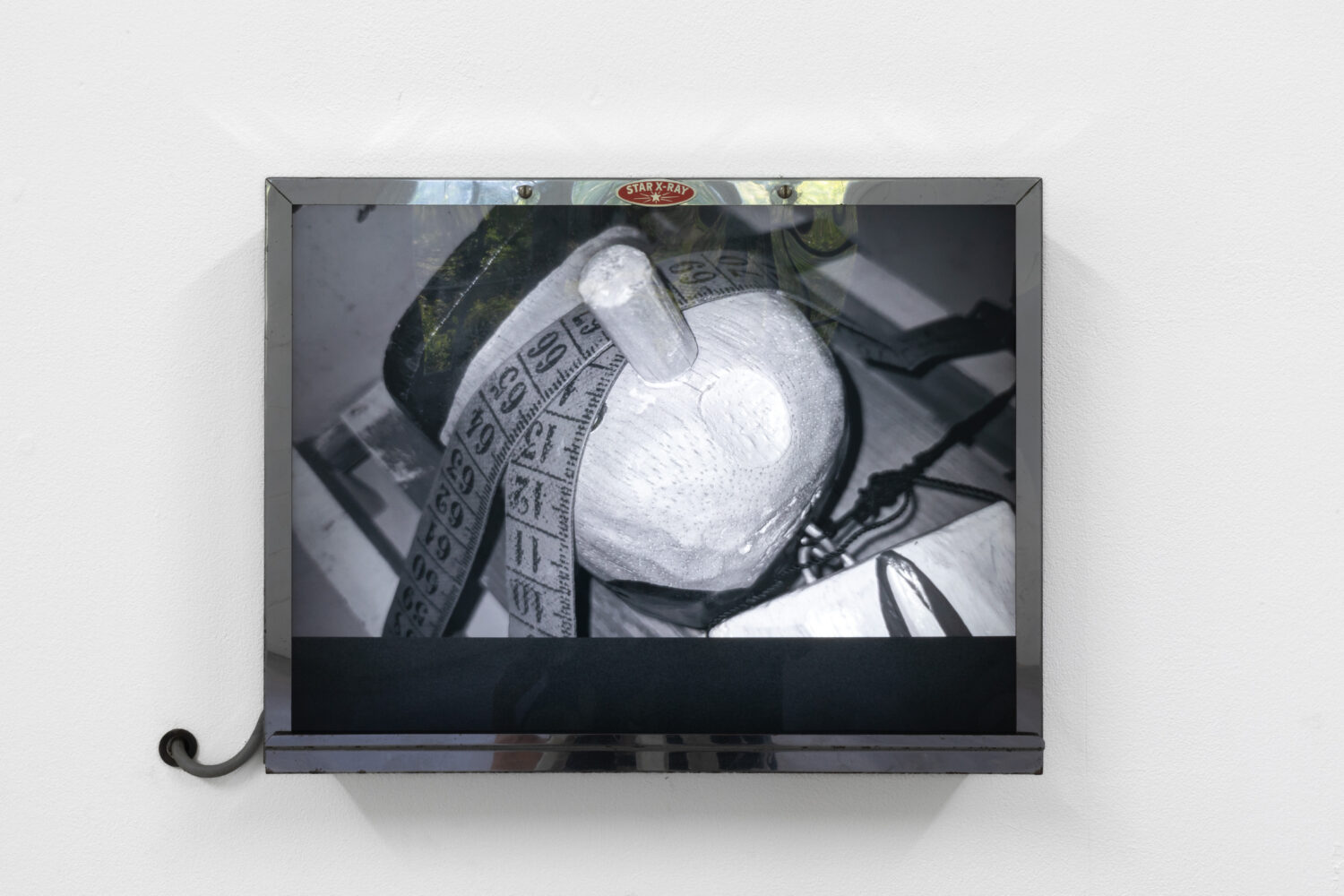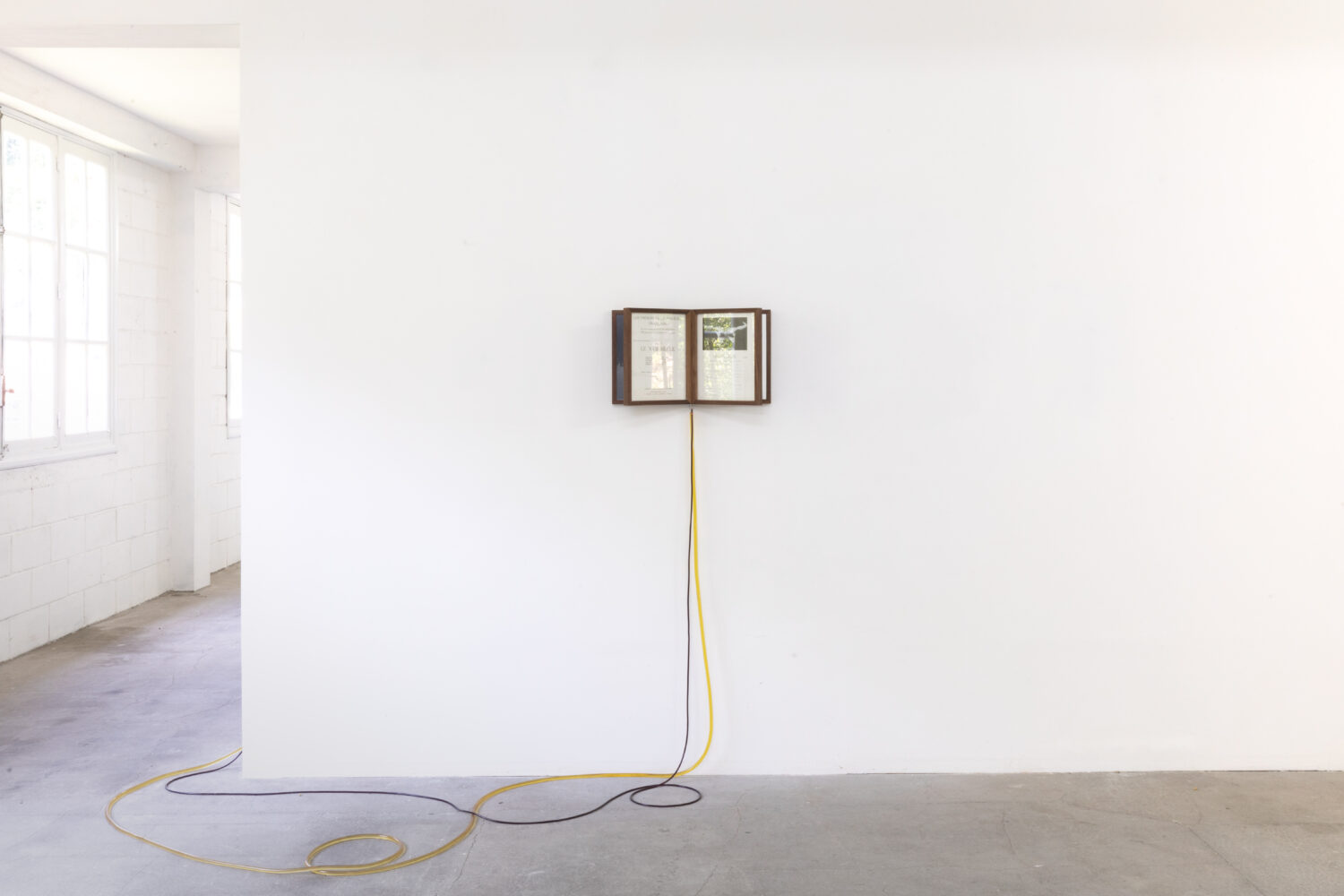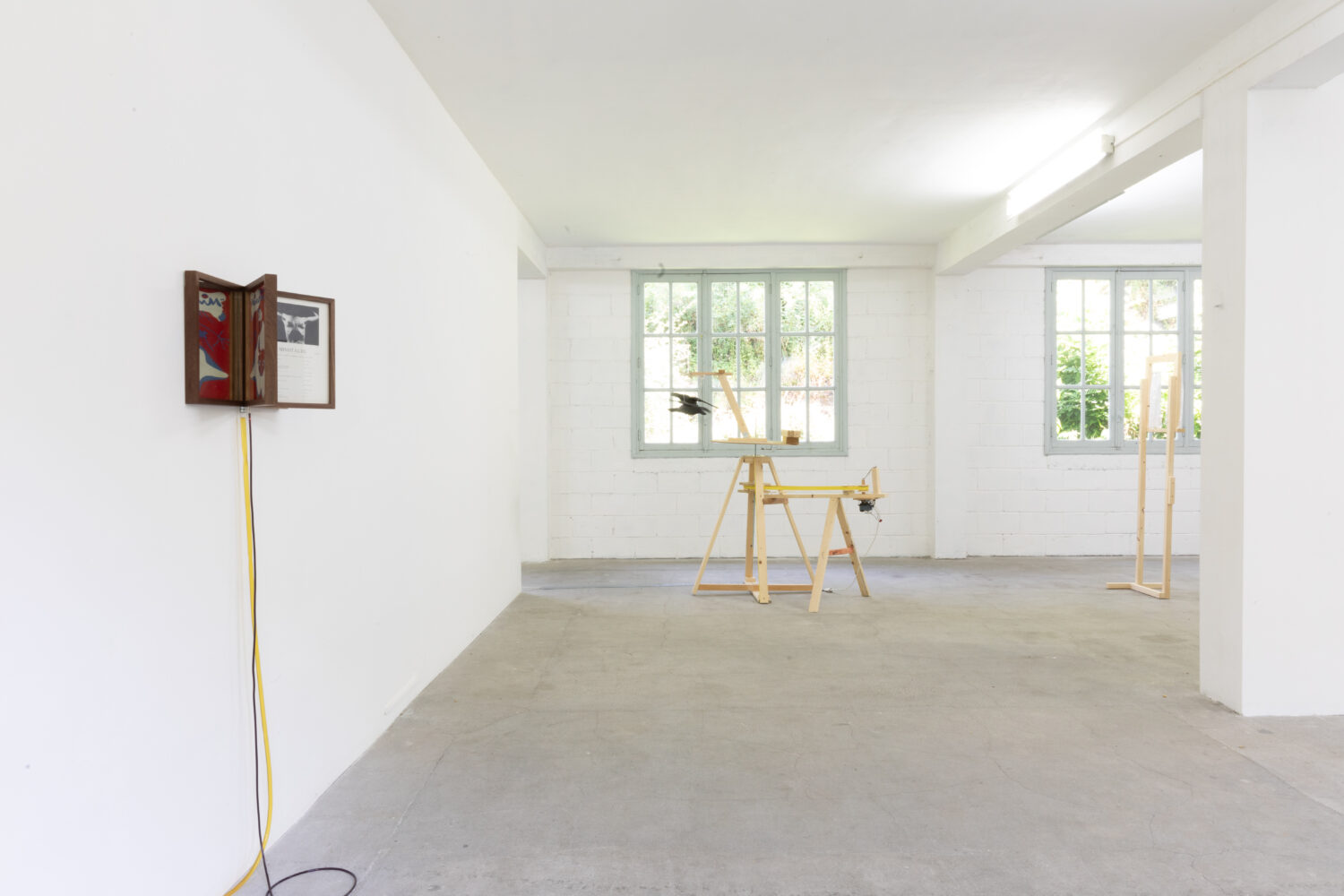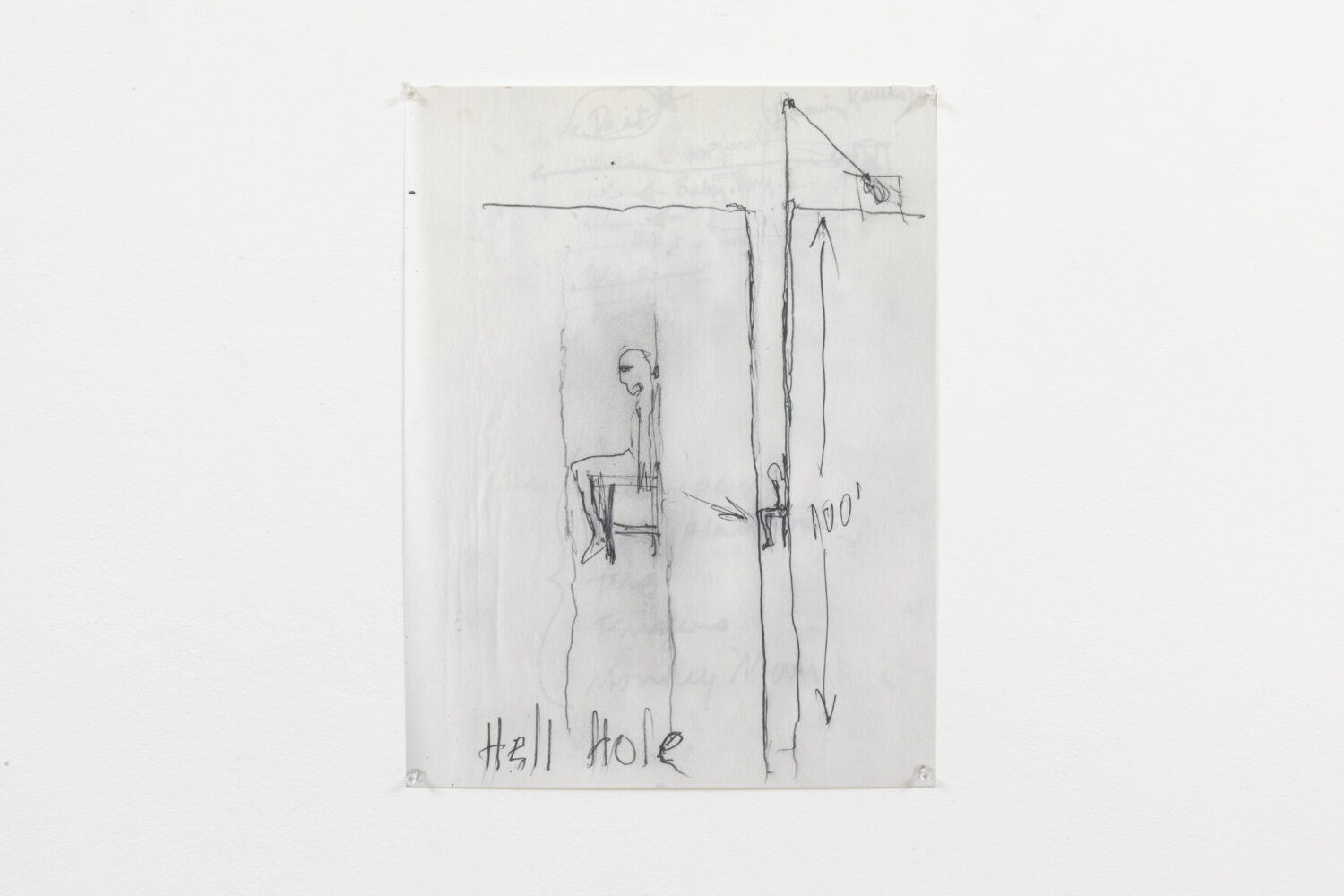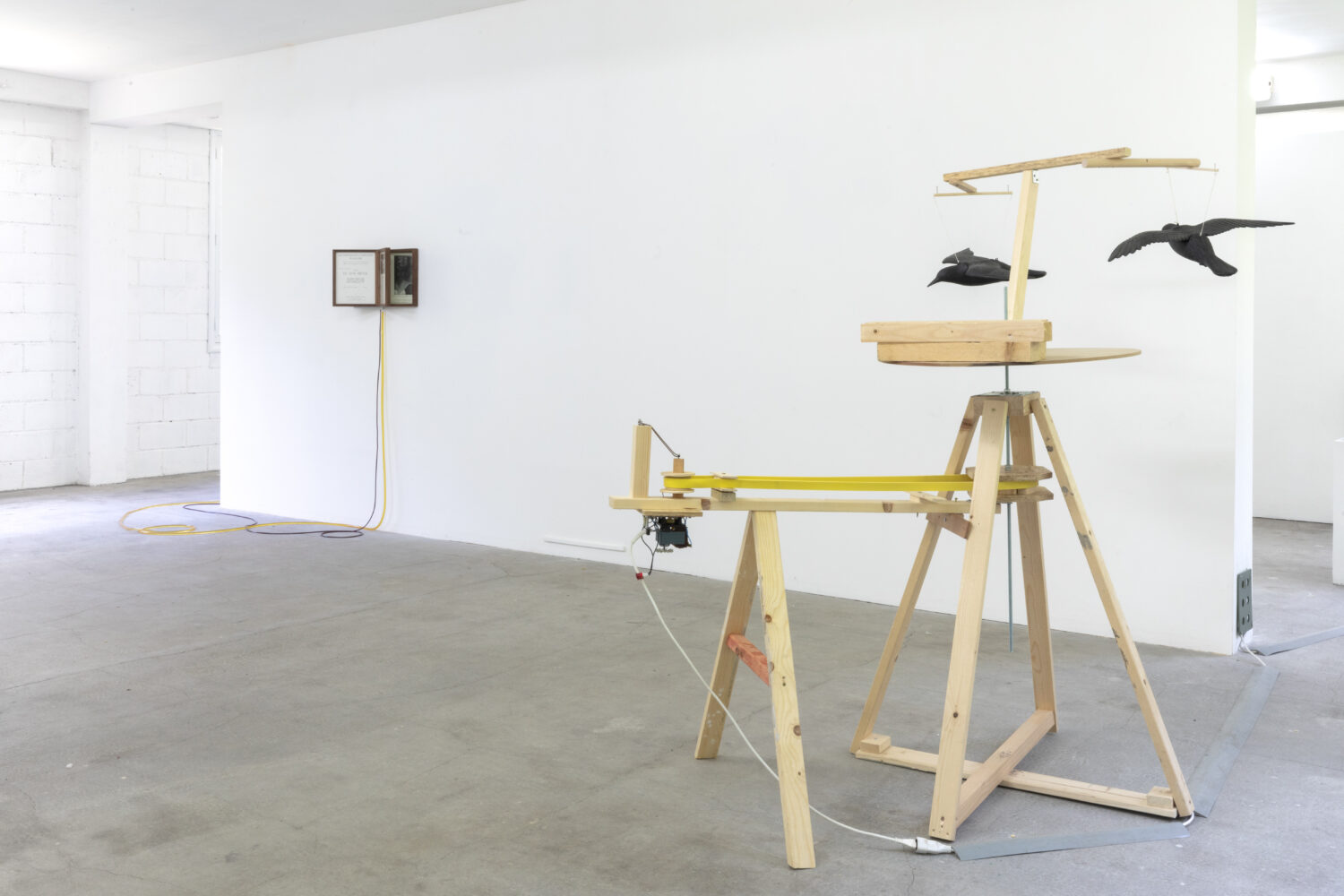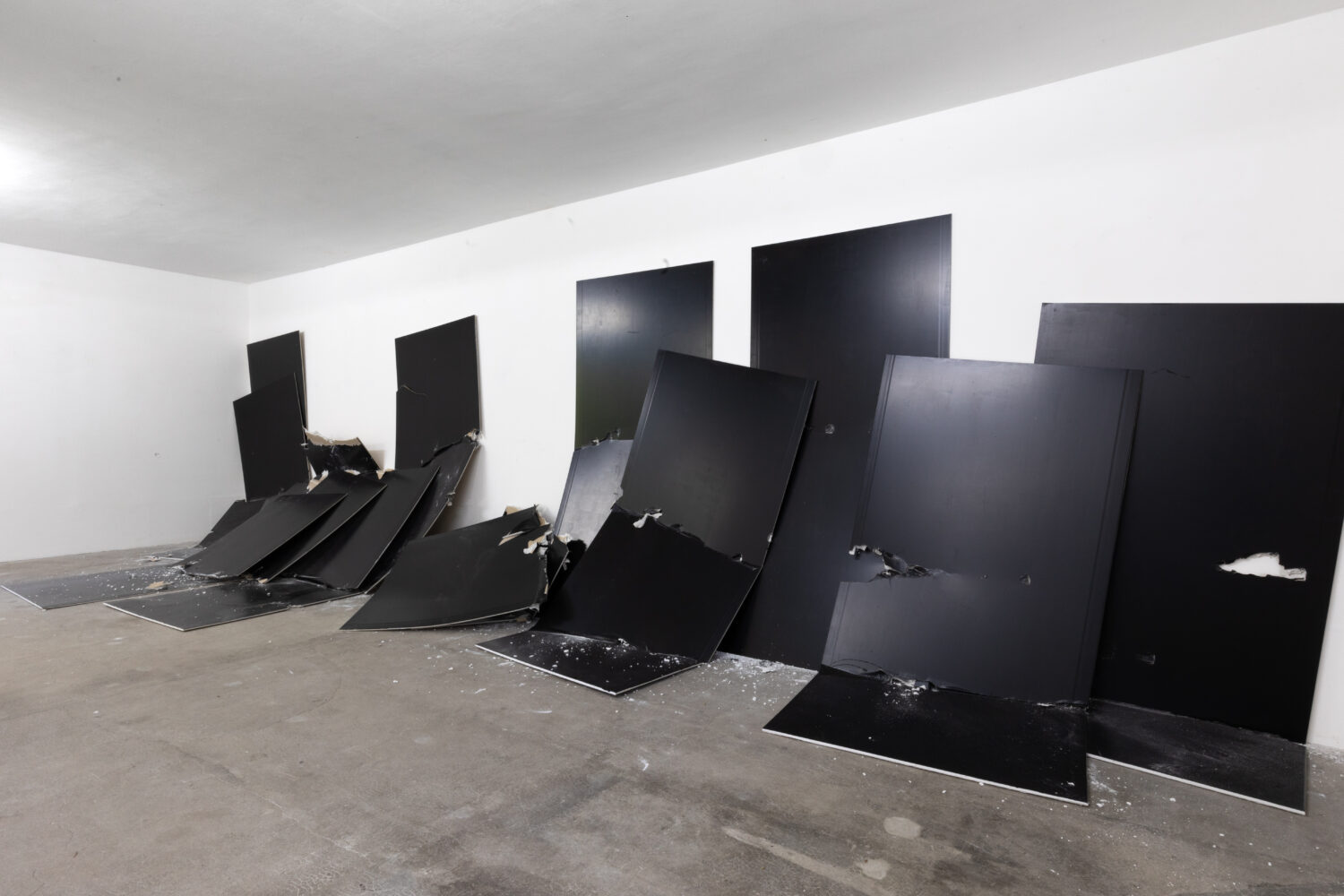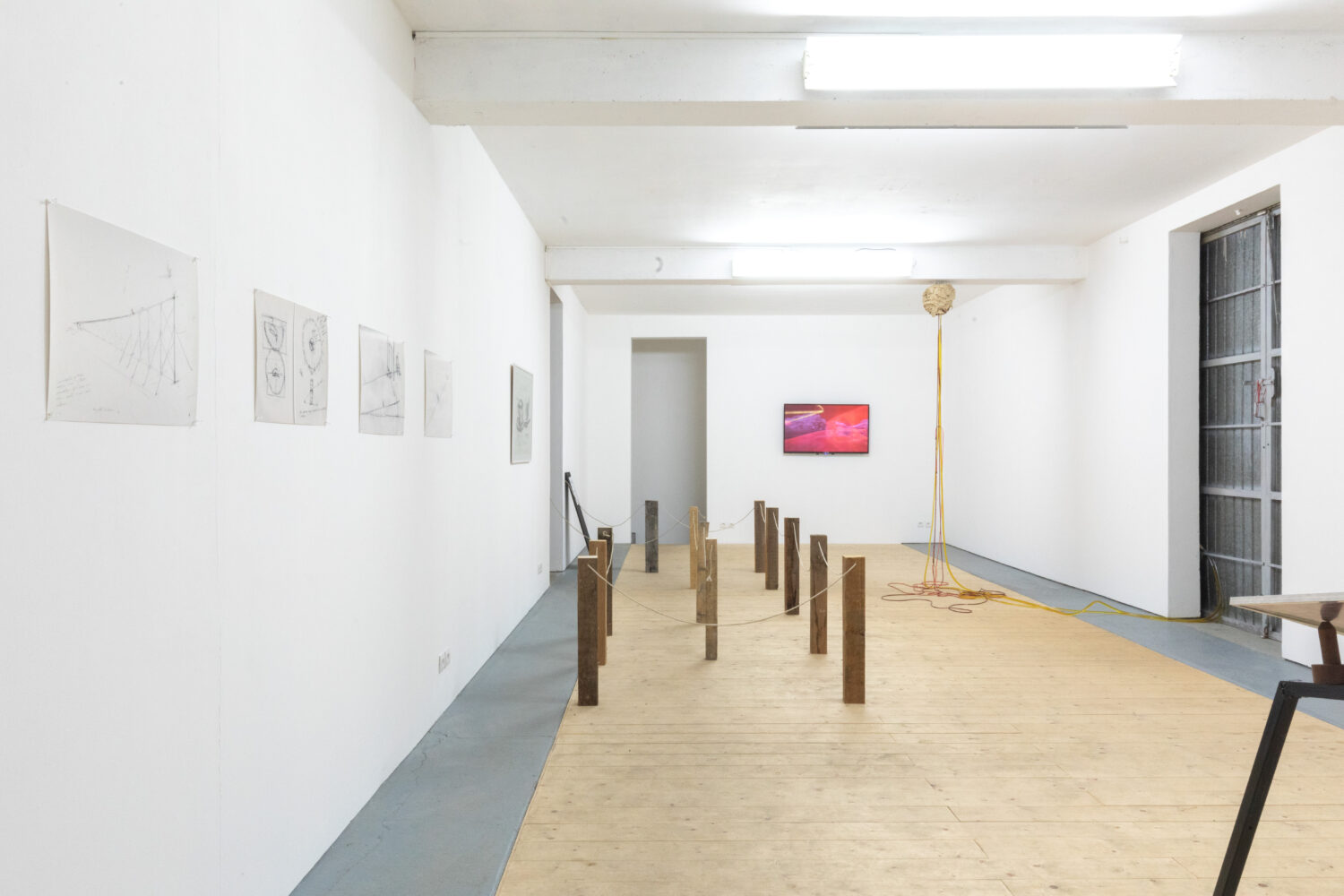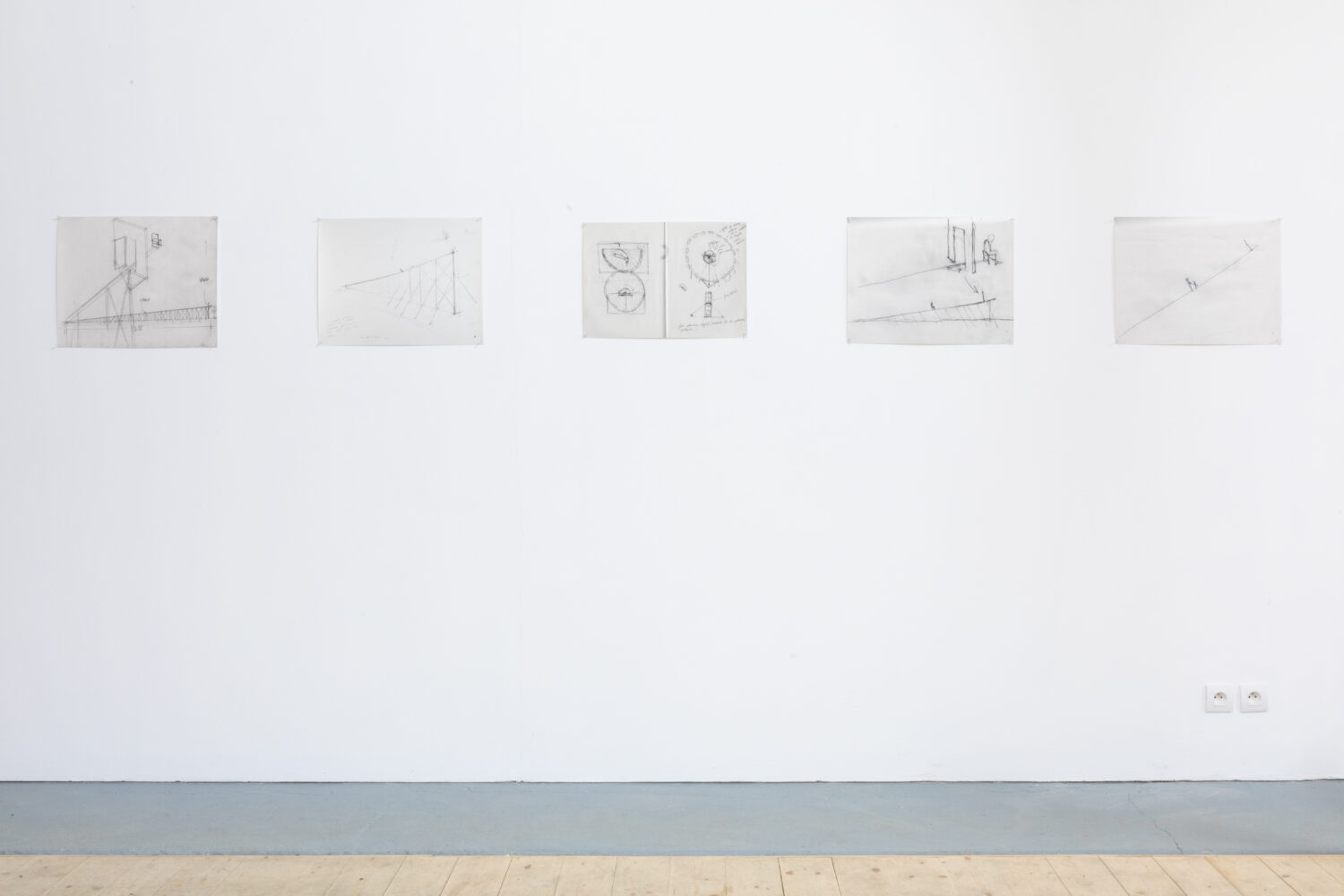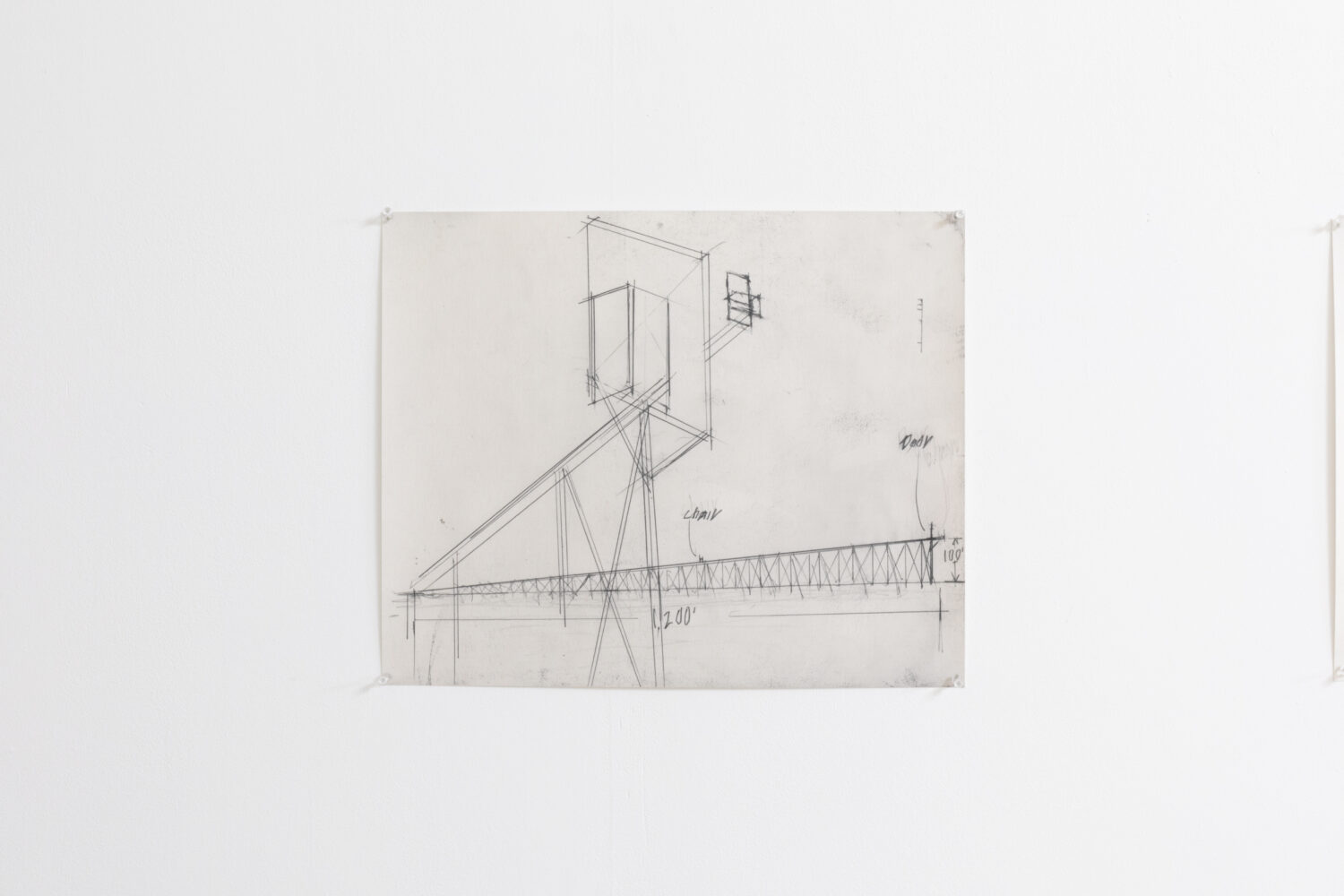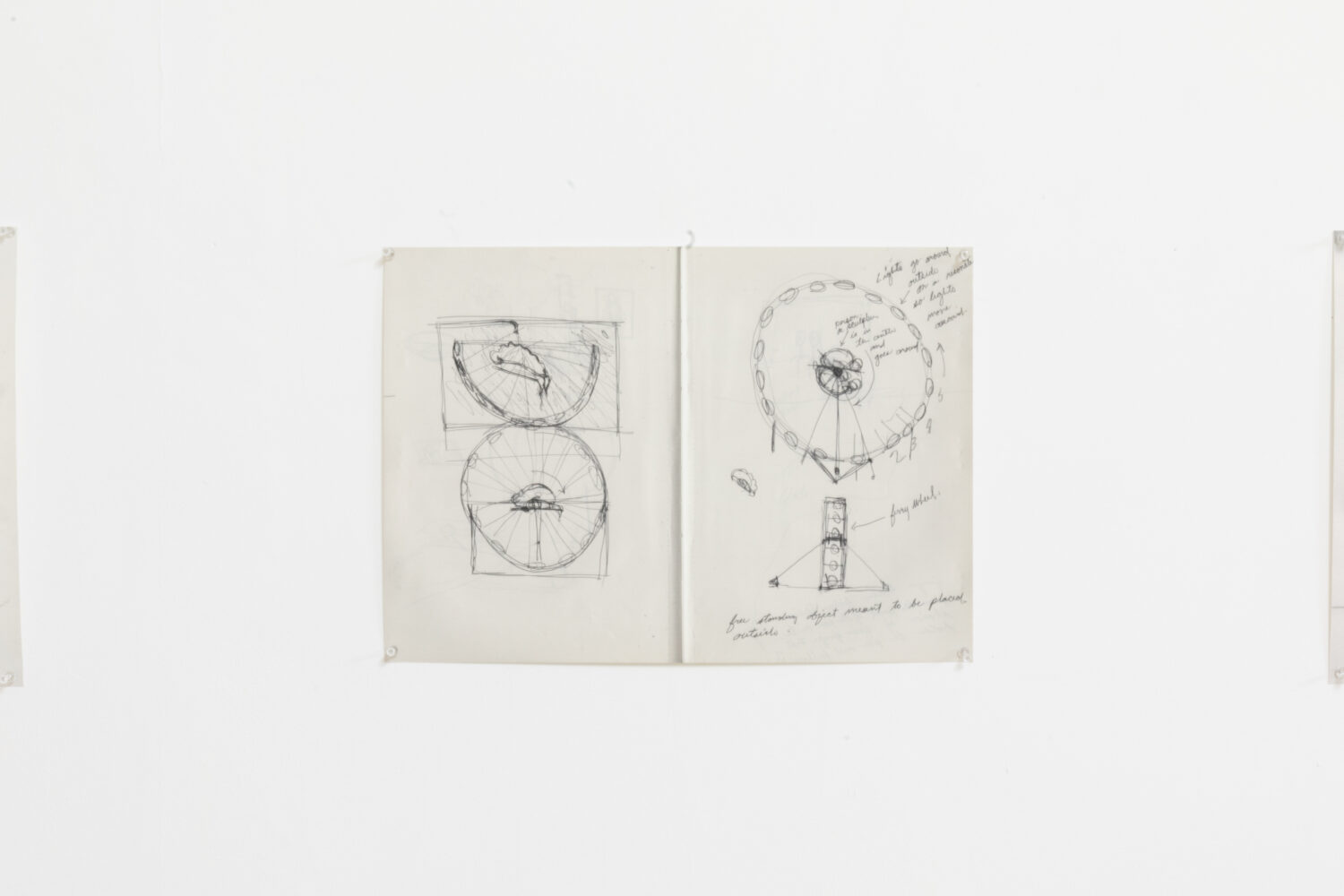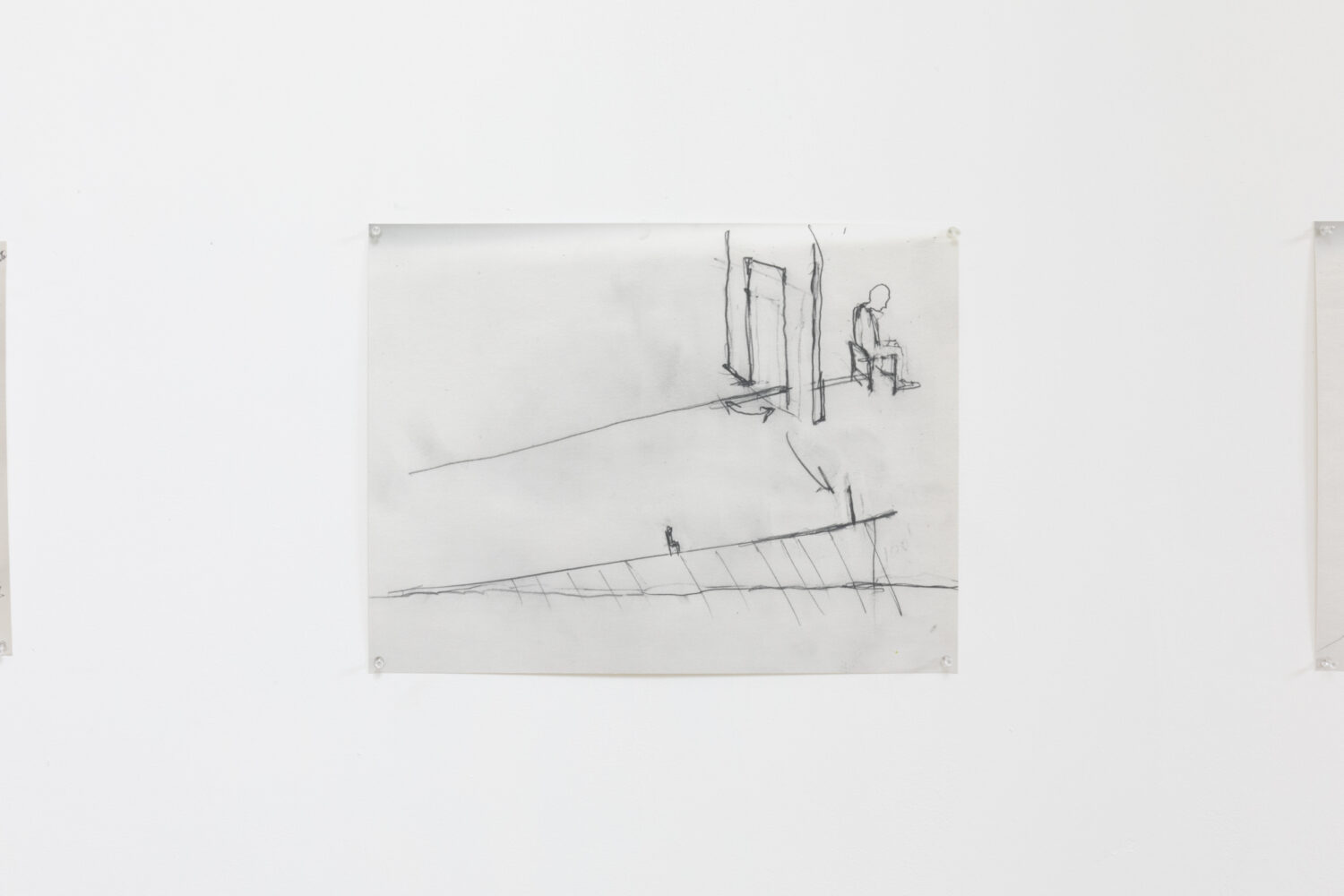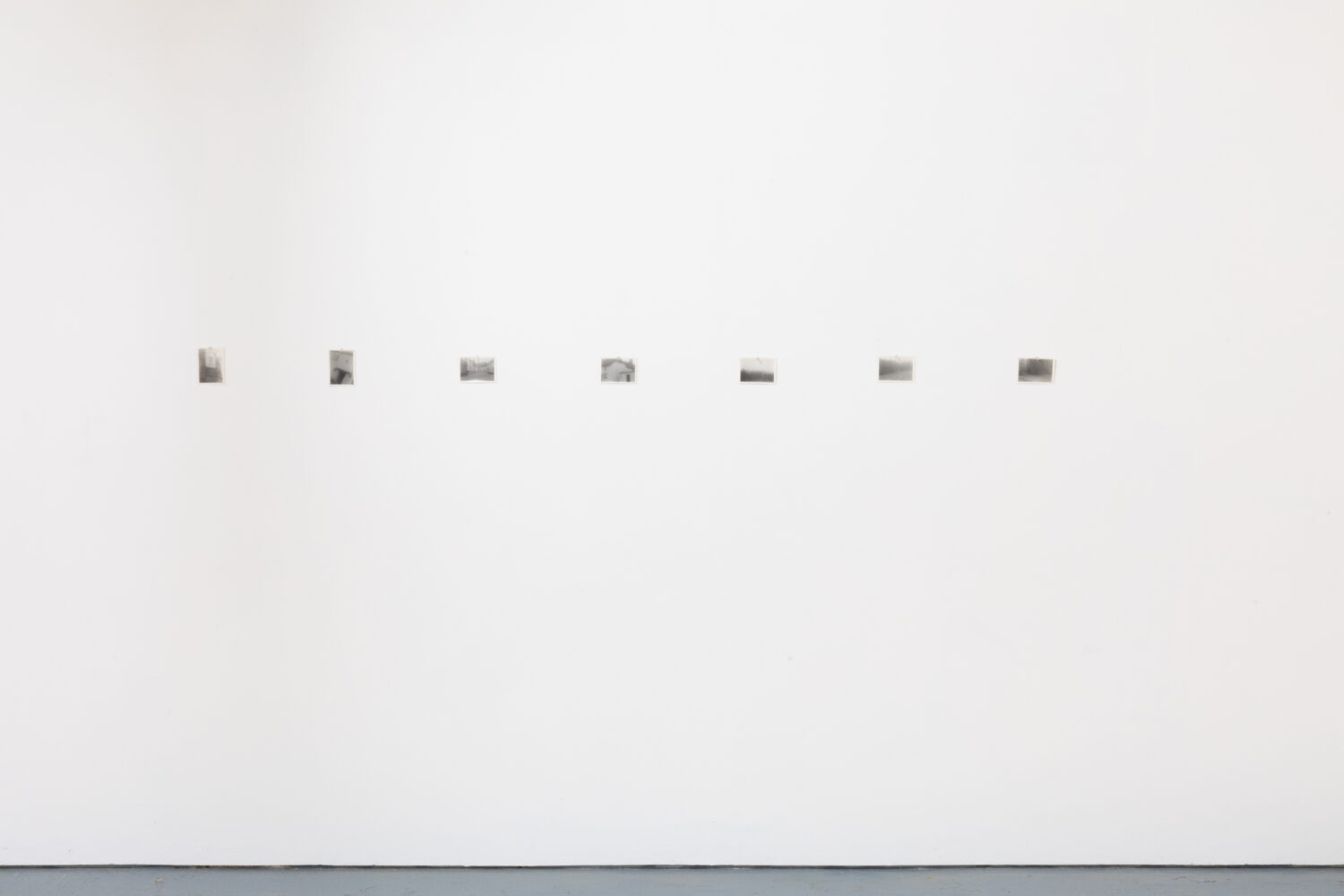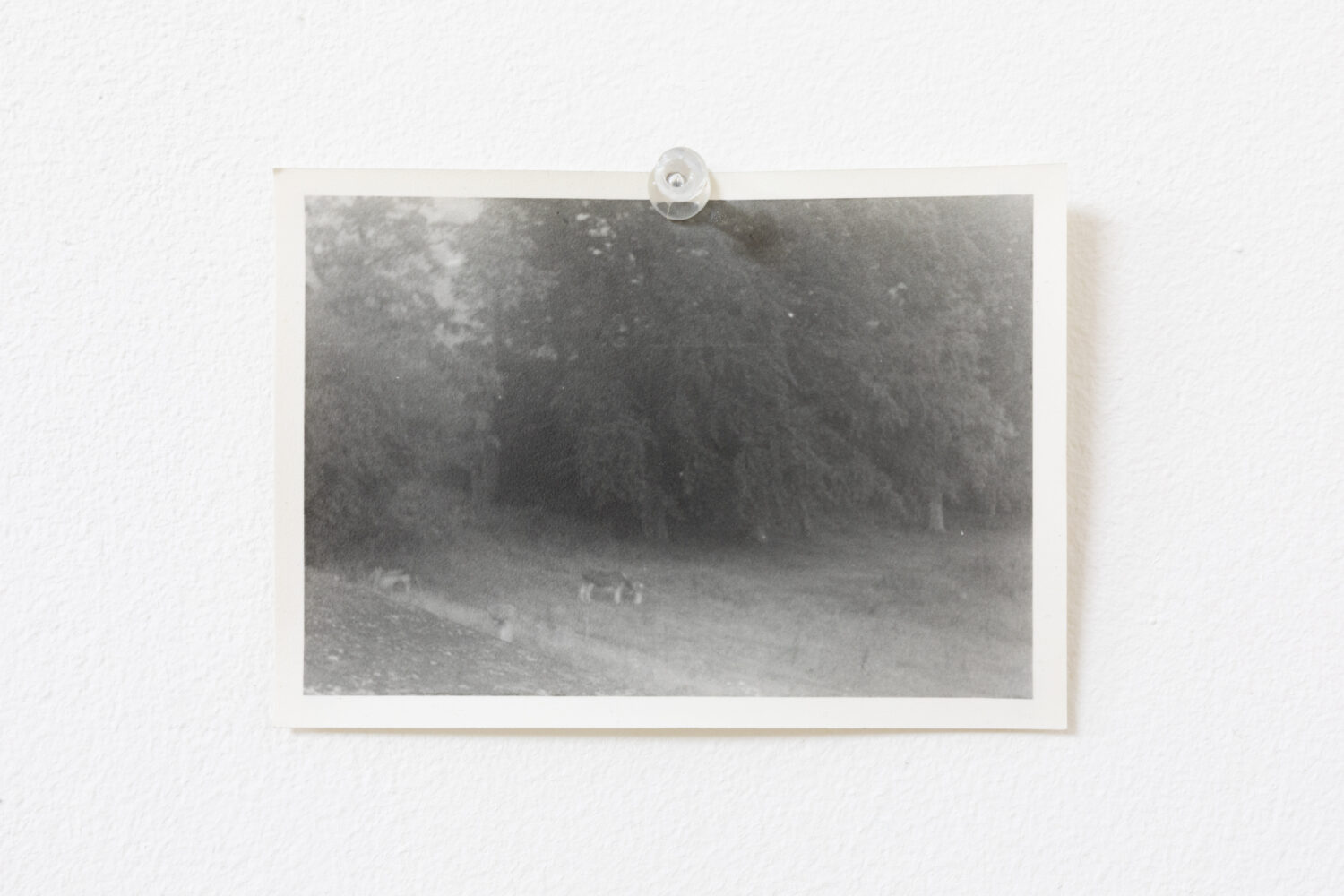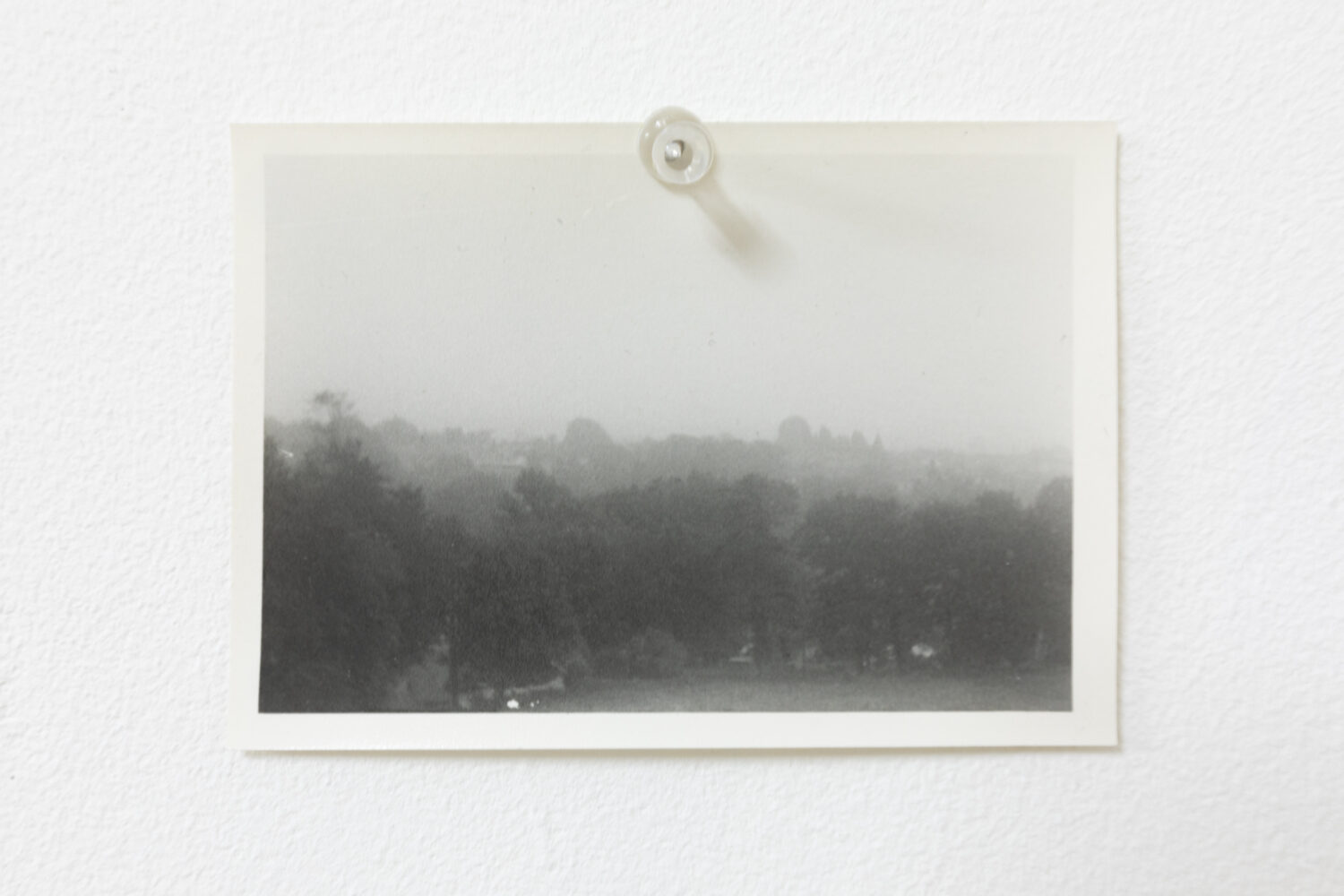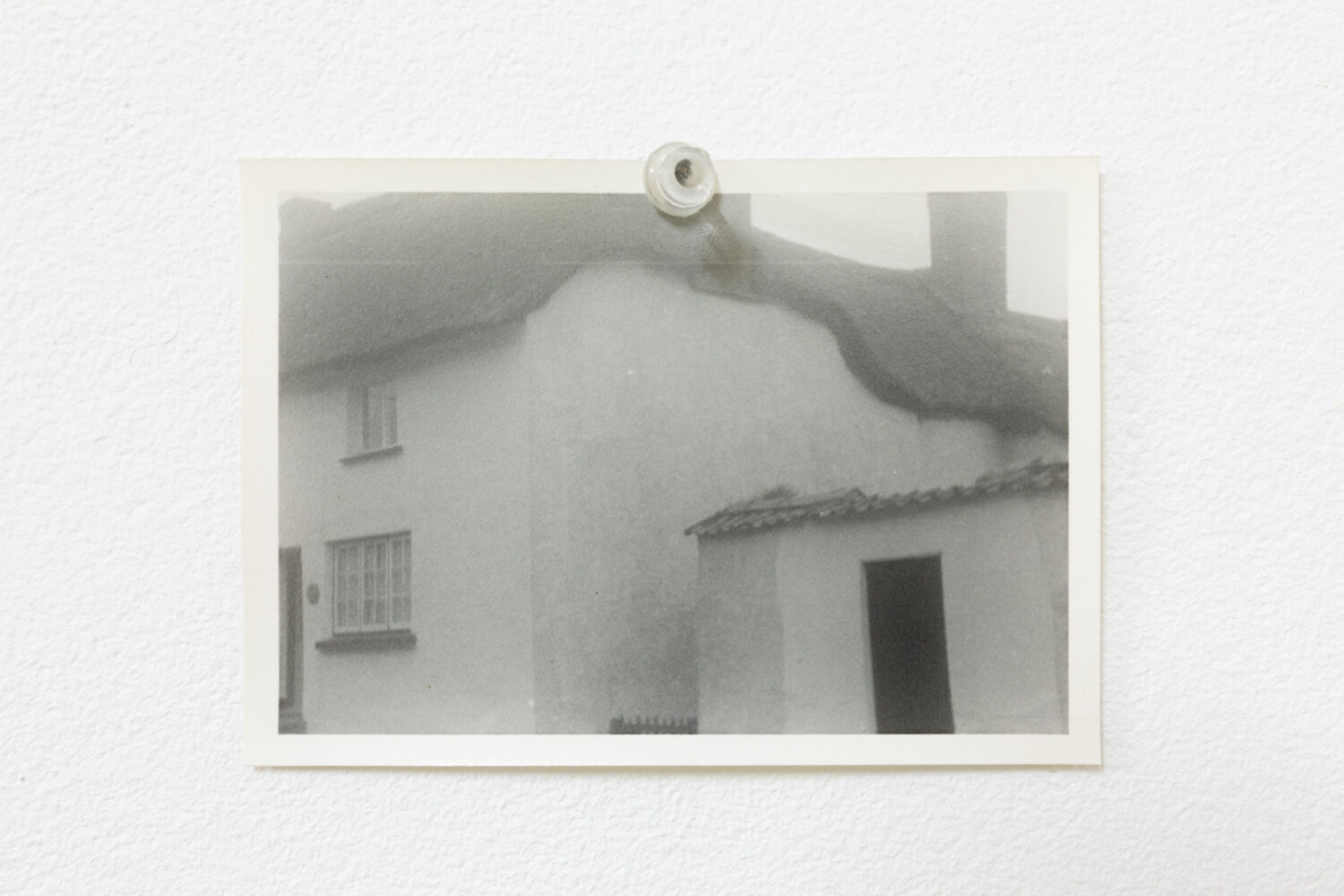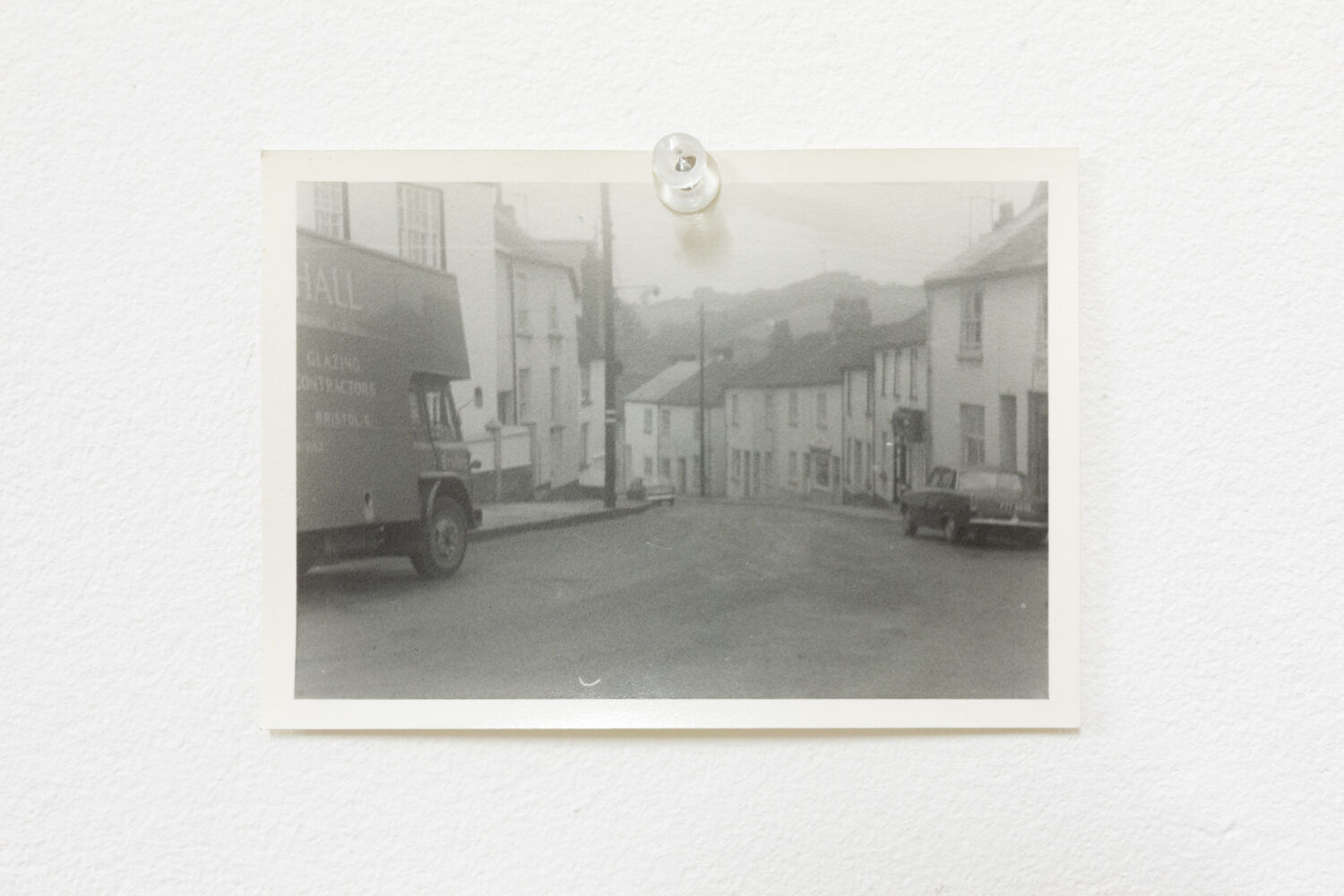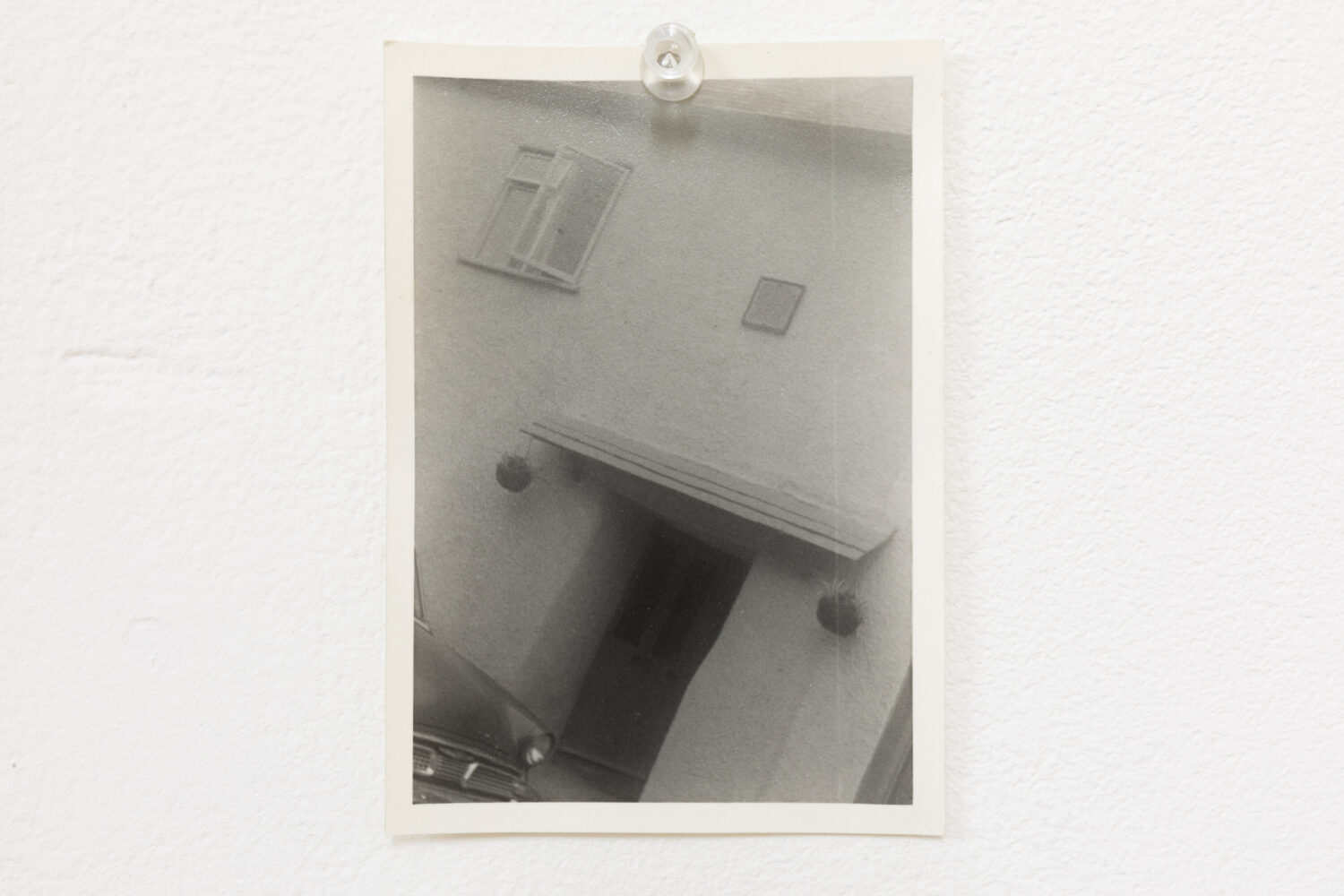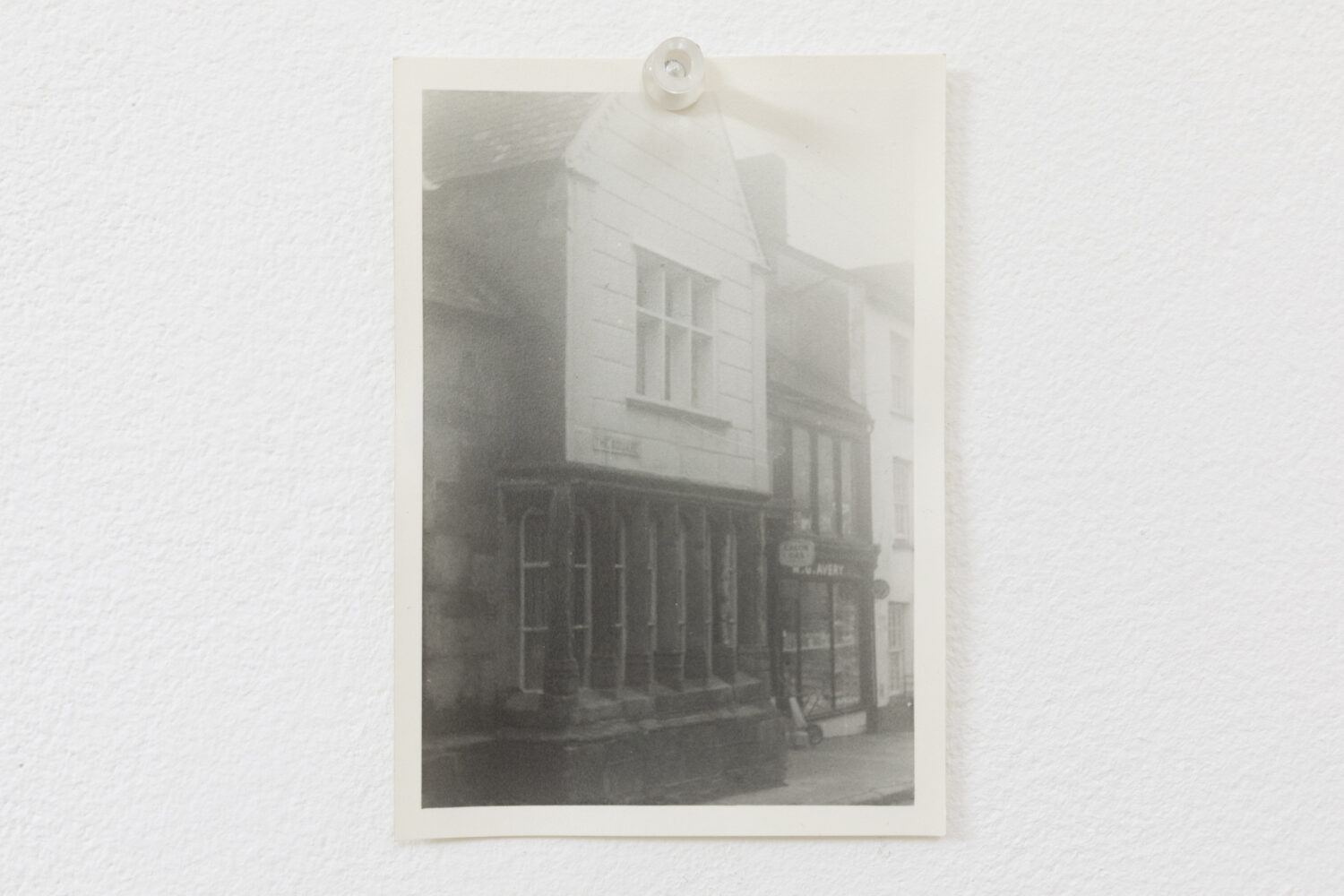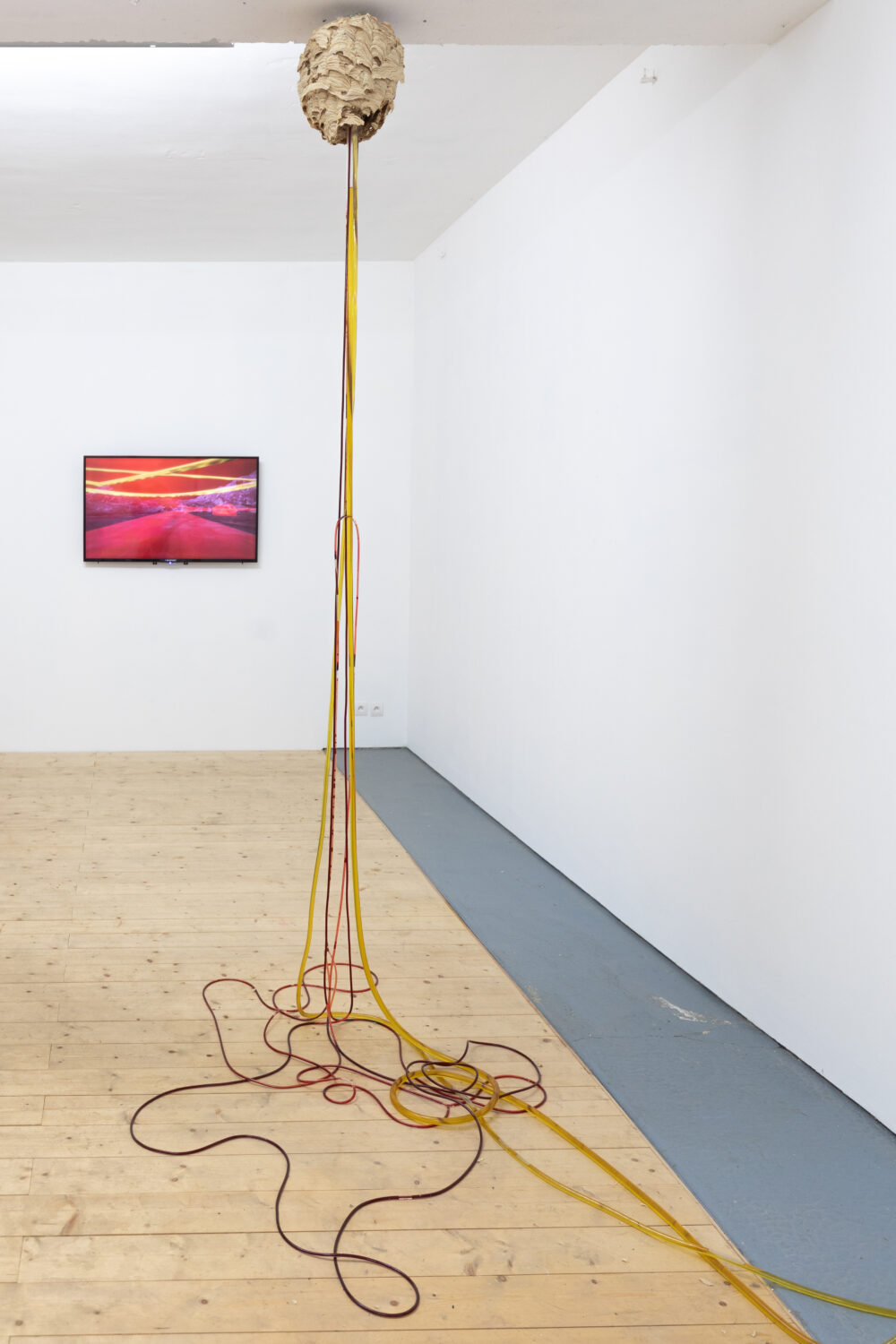Madness of the Day
Scott Benzel
Steve Bishop
K Desbouis
Paul McCarthy
Steven Parrino
Blake Rayne
Romain Rochat
Louise Sartor
Ryan Trecartin
Jason Yates
22.06 - 07.09.2024
Curated by Sabrina Tarasoff
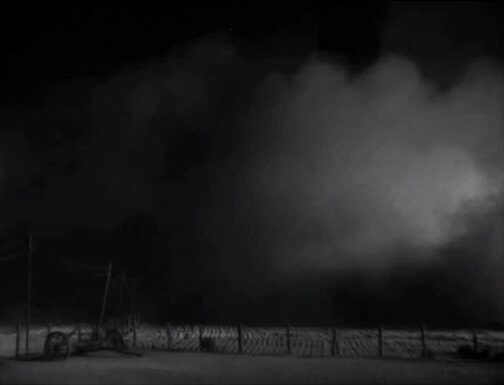
“This brief scene excited me to the point of delirium. I was undoubtedly not able to explain it to myself fully and yet I was sure of it, that I had seized the moment when the day, having stumbled against a real event, would begin hurrying to its end. Here it comes, I said to myself, the end is coming; something is happening, the end is beginning. I was seized by joy.”
—Maurice Blanchot, The Madness of the Day
“I like natural disasters and I think that they may be the highest form of art possible to experience,” Walter de Maria wrote in 1960. I think about this with some admonition, as de Maria’s statement, no doubt, runs the risk of romanticizing the worst imaginable. Still, the deployment of risk seems worth it, namely, as it moves us to think into the small margin of possibility invoked in suspended actions, rote gestures, and frozen frames—to consider the limits of experience, or language, here intimated in the artworks. Maurice Blanchot suggests some safety measures for those who enter: “Know what has happened, do not forget, and at the same time never will you know.” The disaster entices into error, into un-reason: it un-writes everything known.
Scott had mentioned the mobilization of directed action in the infrathin as the risky business of art. Art, he wrote, “winnows possibility space.” In other words, the work of art often risks the disaster: as failure, stasis—the real, totaled by desire, vision, will.
The possible disaster is a thrilling playground.
The title of this exhibition comes from one of Maurice Blanchot’s short fictions, The Madness of the Day. The tale is hard to recount; the text moves between events, and thoughts, recollections, and sights with all the seamlessness of experience. At times, the narrator reminds his reader to take note of what was real; his mind moves to notice things around, then retreats back into itself. Then the “sudden, shocking cruelty of the day”: somehow, glass is crushed into the man’s eyes; he temporarily loses his vision. Seven days pass in an instant—a long, drawn-out sequence of experience set inside a single sentence. He wakes up to face broad daylight, and is struck by ‘the madness of the day:’ “the brightness had lost all reason.”
The categories of life and experience, night and day, vision and thought, become convoluted. He cannot grasp the fullness of vision; it hails nothing but the invisible—the unreality of his sight, of reason, our reason to be. The story ends with the man’s resignation: “I had to acknowledge that I was not capable of forming a story out of these events.” Read into this that, the “I” is not capable: the singularity of experience entices to think into the ungraspable, big picture, yet the whole is always filled with holes—gaps, inconsistencies, errors. Instead, the “I” turns the totality into fact. The fiction pushes into the madness of fact. He turns us to face this inversion at the core of all totalizing experiences. His last words?
“A story? No. No stories, never again.” Dead Men Tell No Tales.
The artworks on view each point to something “wrong” in their construction. Stories? No. Just visions of what cannot be seen. Experiences with the limit never reached: stark visions into which we withdraw—becoming invisible inside the idea.
The artworks in this exhibition spin in the madness of the day, turning, inverting expectation, convoluting narrative. Something is always perceived as “wrong.” Partial, incomplete, out of place. Stories? No. But, perhaps, romantic fragments running the risk of disaster—as image, structure, philosophical problem. The attempt to visualize courts chaos, sometimes. But, as Blanchot reminds: “the invisible still remains.” Sequential views suggest narrative totalities. Motion is hailed in stillness. The risk is roused; it rises and falls. Thoughts open, and close. Birds fly backwards. The sight is always collapsing into the mind, overturned to thought, memory, and spilling back out—as something else. We try to remember, touch, re-enact. In the end, to court the whole—to think into the ‘everything’ of a past, or present event, or, an event yet to unfurl—is a kind of madness. And still, turning to face the madness is also a mobilization of the active force of attention. The madness is attractive; it faces us with the facts of our desire, the force of the will, the materiality of thought.
No stories, ever again.
Face to face with “the madness of the day,” thoughts and matters change place. Sights push us into the unseen, actions are undone as thoughts, the absence of story suggests a narrative, motion hails stillness. Logic spins into unreason; language comes undone at the limits of understanding. The disaster, as Blanchot writes, de-scribes. It un-writes, un-does, up-ends. Language, writing, turns to other forms of expression. In this, the matter at hand, here, is to construct a kind of ride from its constituent parts, which in the exhibition format would hinge on multiple, partial sights only-ever seen in passing—at vanishing points. Rides rely on paratactic narratives; meaning emerges in sequences of sudden visions of vaguely interrelated things, which when set in motion come to relay a total idea. You cannot experience everything at once; it begins where it ends, and so on, ad infinitum.
Ride over and over.
And so, artworks appear as potent attractors. They imagine languages set in motion by forces and influences forging paths, lines of thought, routes leading elsewhere—to the effect of action, re-enactment, active thought: velocity, gravity, scale. Everything floats in this ambiguity, as forms of the fantastic, courted in everyday sights.
The disaster has already happened.
With thanks to Gagosian Gallery inc, NY, Carlos/Ishikawa, London and FRAC Poitou-Charentes
Steven Parrino, courtesy the Parrino Family Estate and Gagosian

